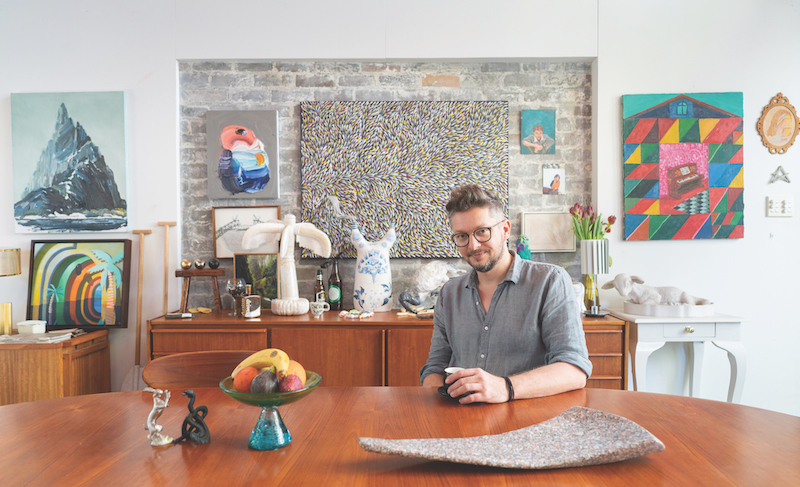Knowing where to start when collecting art can be daunting, especially when you’re buying to a fixed budget or haven’t yet cultivated personal artistic taste. Theming an art collection can help narrow down the options and refine your taste. Here’s how to get started.
A MATTER OF TASTE
As an art collection grows, a theme will often appear naturally, simply because the work you collect reflects personal taste. When considering a theme, remember your taste might change over time. Be prepared to remain flexible with the evolution of your collection. With this in mind, Sydney-based artist and collector Alex Seton suggests, “If you want your collection to be thematic, as soon as your chosen theme stops you from acquiring work you love, you may need to change the goal posts and broaden the theme.”
START YOUNG
If working with a modest budget, collecting works by emerging and recent graduate artists can be a theme in itself. Hobart-based art critic and collector, Andrew Harper, has been collecting work by emerging artists for the past two decades. “I’m a huge fan of Artist-Run-Initiatives and not-for-profit spaces, and because of this, I was collecting before I realised I was a collector” he says. “One of the greatest pleasures I find with any art form is watching an artist develop, find their voice and become confident in it.” Often in the first five years of their artistic practice, emerging artists are on the cusp of finding their groove, producing work that pushes established boundaries. Collecting in this manner could lend to an eclectic collection rich with experimentation.
ABORIGINAL ART
Theming a collection around Aboriginal art is not only visually rewarding, it is also an important investment in our history. More than 60,000 years of knowledge and culture is imbued within the art of our First Nations People, and each region of Australia possesses its own visual language relating to a specific part of Country. Tahnee Roberts from Short St Gallery in Broome, Western Australia, speaks of the huge variety of work available and how to navigate it. “Collectors could focus in on a style, community, artist or region, such as ochres from the Kimberley or coloured canvases from the Western Desert. Collections might focus only on senior law women or men while others focus on supporting young emerging artists.”
TAMING A LARGE COLLECTION
When collecting a significant amount of artwork, a loosely followed theme can provide focus and cohesion while still allowing considerable range. Australian businessman Patrick Corrigan AM is known for his extensive collection of black and white Australian photography produced between the early 1900s to the 1970s. Developed throughout his years of working in the freight industry, Patrick’s photography collection includes iconic pieces by Max Dupain, Harold Cazneaux and David Moore. Given the documentary nature of photography, Patrick’s collection presents a historical snapshot of life in Australia and as a result, pieces from his collection are regularly sought for inclusion in national exhibitions and publications on photography.
LOOK TO OTHERS
A helpful way to learn how an art collection can be themed is to study those maintained by other collectors. Judith Neilson, owner of Sydney’s White Rabbit Gallery, began collecting art during frequent trips to Beijing in the early 1990s. Following the advice of Chinese artist and friend, Wang Zhiyuan, Judith took note of the work of contemporary Chinese artists. This became the thematic backbone of her collection, which is now comprised of more than 2000 artworks. Another avenue for gaining insight on theming a collection is to look at how curators work. Curators are experts at bringing together seemingly unrelated pieces to tell a specific story. Follow curators on Instagram, read catalogue essays and visit curated exhibitions as much as you can.

